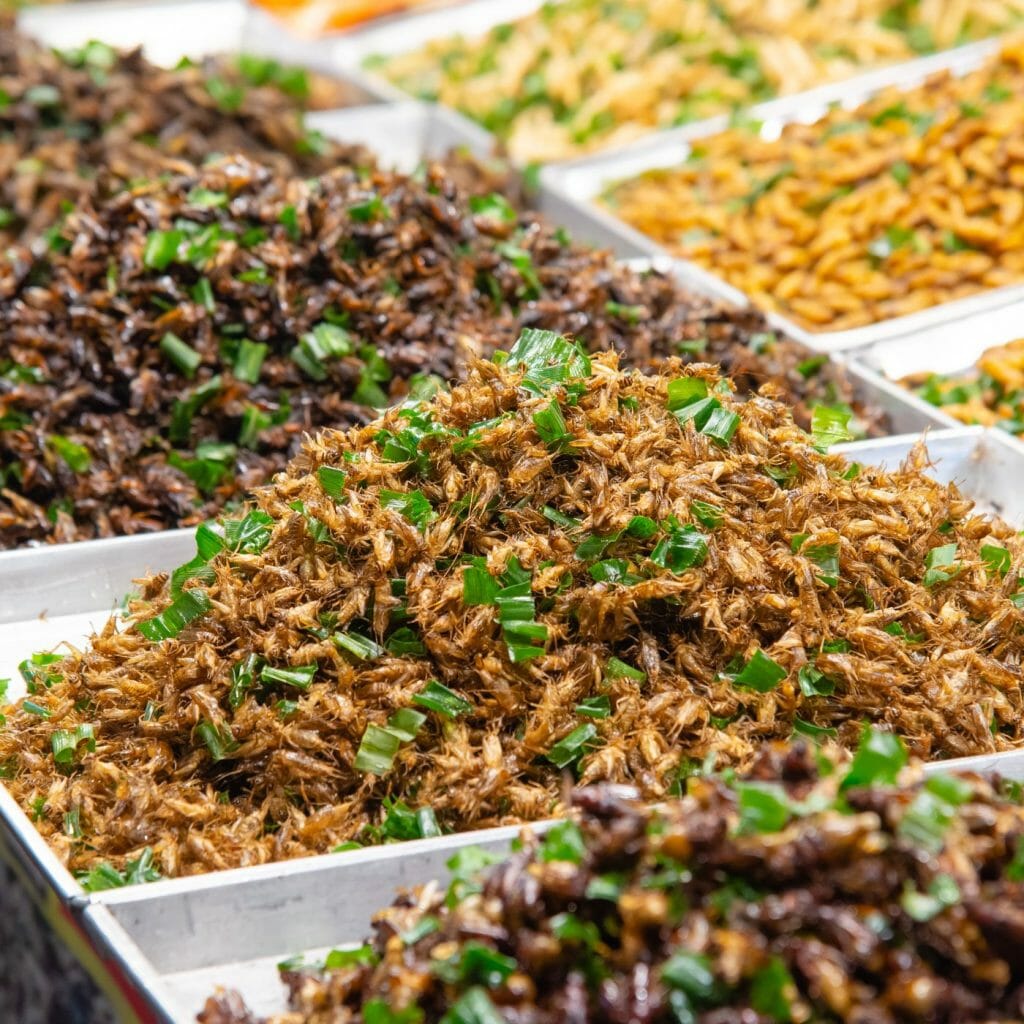Lovely Grub: Are Insects the Future of Food?

Insect meals could also replace some of the expensive ingredients (e.g. soybeans and fishmeal) that are fed to farm animals, potentially lowering the cost of livestock products and freeing up feed crops for human consumption. As an added bonus, bugs can be raised on refuse, such as food scraps and animal manure, so insect farms could increase the world’s supply of protein while reducing and recycling waste.
Officials at the United Nations Food and Agriculture Organization (FAO) became interested in the role of insects in food security about a decade ago, after documenting insects’ significant role in Central African diets. Since then, the FAO has been commissioning studies, issuing reports, and arranging small meetings on eating insects. The gathering in Ede, jointly organized by the FAO and Wageningen University and Research Centre, is the culmination of all these efforts – the first major international conference to bring together entomologists, entrepreneurs, nutritionists, chefs, psychologists, and government officials. They are here to discuss how to expand the use of insects as food and feed, particularly in the Western world, and to lay the foundation for an edible insect industry – to review the science, identify the obstacles and talk about how to move forward.
Over the next three days, they will lay out their vision for the future. It is ambitious and optimistic. They will speculate about creating an insect aisle at supermarkets and fast-food restaurants serving bug burgers. They will imagine putting packages of ‘beautiful, clean’ shrink-wrapped mealworms on display at the meat counter alongside the skirt steak and chicken wings. And they will dream about a world in which forests are thick, the land is fertile, the climate is stable, water is clean, waste is minimal, food prices are low, and hunger and malnutrition are rare.
This conference, they hope, will be the beginning of it all. The experts assembled in the darkened auditorium are fired up, ready to give the world the gift of six-legged livestock. Are we ready to receive it?
 Turning to insects for nourishment is not a novel idea – the Bible mentions entomophagy, as do texts from Ancient Greece and Rome. But insect eating never became common in Modern Europe. The reasons are unknown, but the spread of agriculture – and, in particular, the domestication of livestock – may have made insects, and undomesticated plants and animals in general, less important as food sources. The advent of agriculture may have also contributed to a view that insects were primarily pests and that insect eating was primitive. What’s more, Europe’s temperate climate makes wild harvesting less practical than in the tropics, where insect populations are larger and more predictable.
Turning to insects for nourishment is not a novel idea – the Bible mentions entomophagy, as do texts from Ancient Greece and Rome. But insect eating never became common in Modern Europe. The reasons are unknown, but the spread of agriculture – and, in particular, the domestication of livestock – may have made insects, and undomesticated plants and animals in general, less important as food sources. The advent of agriculture may have also contributed to a view that insects were primarily pests and that insect eating was primitive. What’s more, Europe’s temperate climate makes wild harvesting less practical than in the tropics, where insect populations are larger and more predictable.
Ministry Earth is a collective Awareness-Raising, Perception-Building Initiative from Humanity Healing International, Cathedral of the Soul Educational outreaches created to introduce the perspective of Ethical Consciousness and Nonhuman Personhood to its Animal & Eco Ministries. Ministry Earth is a Service-Oriented Initiative and its Magazine is a Copyrighted Publication of OMTimes Media, Inc. Broadcasting and Publishing House.






